Sommersemester 2025, Bildhauerei , Theorie und Geschichte Bildhauerei_Startseite , Weben
Manggarai - Walk about the Ikat-Line
"Why and what's the Manggarai....?", one hears one's global questions and we are not only on the subject, but have unconsciously provided two justifications!
The Ikat line, based on genetic and linguistic facts, as emphasized by Christopher Buckley, is characterized not only in the textile differences found on both sides of the line through Southeast Asia, but also in the increditable loin looms used for this purpose.
The Manggarai, the westernmost part of the island of Flores in Indonesia, proves to be a clear example of the Ikat line; it separates Manggarai from the rest of Flores. Here you will only find loin looms equipped with a flat warp and reed comb; in contrast to the eastern Flores! Here, two cultural currents meet, merge and constantly create new territory from the incredibly old components of loin looms. The Manggarai currently forms the spearhead of the western cultural movement. Just a few kilometers further east we are in Ikatland!
Here is a small selection of loin looms in Manggarai on Flores! These studies are part of the project „Flores of the Loom“!
—————————
"Why and what’s the Manggarai….?“, hört man sich global fragen und schon sind wir nicht nur beim Thema, sondern haben gleich zwei Begründungen unbewußt mitgeliefert!
Die Ikat-Linie, basierend auf genetischen wie linguistischen Fakten, wie sie von Christopher Buckley betont wird, zeichnet sich nicht nur in den textilen Unterschieden aus, die man auf beiden Seiten der Linie durch Südostasien vorfindet, sondern auch in den hierzu benutzen Lendenwebstühlen.
Die Manggarai, westlichster Teil der Insel Flores in Indonesien, erweist sich als ein deutliches Beispiel für die Ikat-Linie; sie trennt Manggarai vom restlichen Flores. Hier finden sich ausschließlich Lendenwebstühle ausgerüstet mit einer Flachkette und Rietkamm; ganz im Gegensatz zum östlich gelegenen Flores! Hier treffen zwei Kulturströme zusammen, verschmelzen und kreieren ständiges Neuland aus den unglaublich alten Zutaten der Lendenwebstühle. Dabei bildet die Manggarai derzeit die Speerspitze der westlichen Kulturströmung. Nur wenige Kilometer weiter östlich befinden wir uns in Ikatland!
Hier eine kleine Auswahl von Lendenwebstühlen in Manggarai auf Flores! Diese Studien sind Teil des Projekts „Flores of the Loom“!
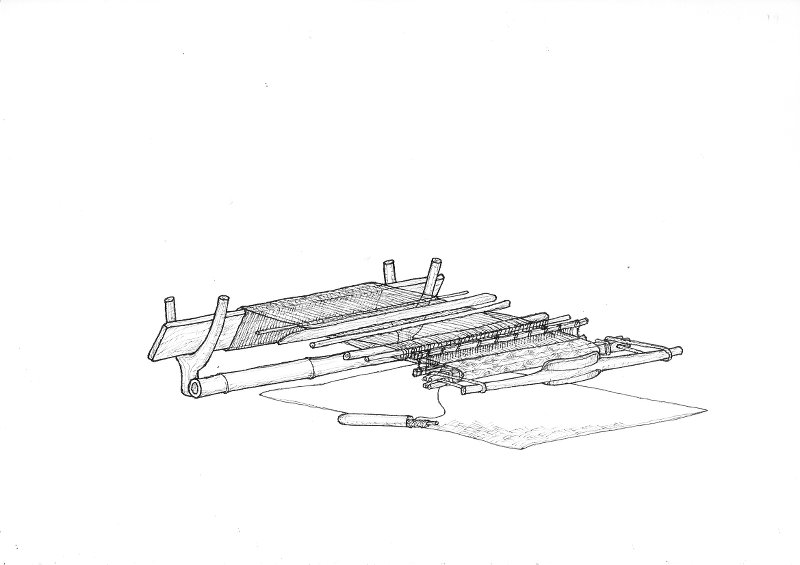
Perhaps the most original version of a local loin loom in Ruteng, Central Manggarai. A fork serves as a holder for a conspicuously high chainboard on which the flat warp is rolled up. In addition, there is a reed comb on board! The fork may originally come from the Manggarai, but the warp board like the flat warp with reed should have flowed into the last 1,000 over Sulawesi from western Indonesia!
—————-
Vielleicht die ursprünglichste Version eines Lendenwebstuhls in Ruteng, Zentral-Manggarai. Eine Astgabel dient als Halterung für ein auffällig hohes Kettbrett auf dem die Flachkette aufgerollt ist. Außerdem ist ein Rietkamm an Bord! Die Astgabel mag ursprünglich aus der Manggarai stammen, doch das Kettbrett wie die Flachkette mit Riet sollten in den letzten 1.000 über Sulawesi aus dem westlichen Indonesien eingeflossen sein!
by-nc-nd Charlotte Gröger/Guido Plum
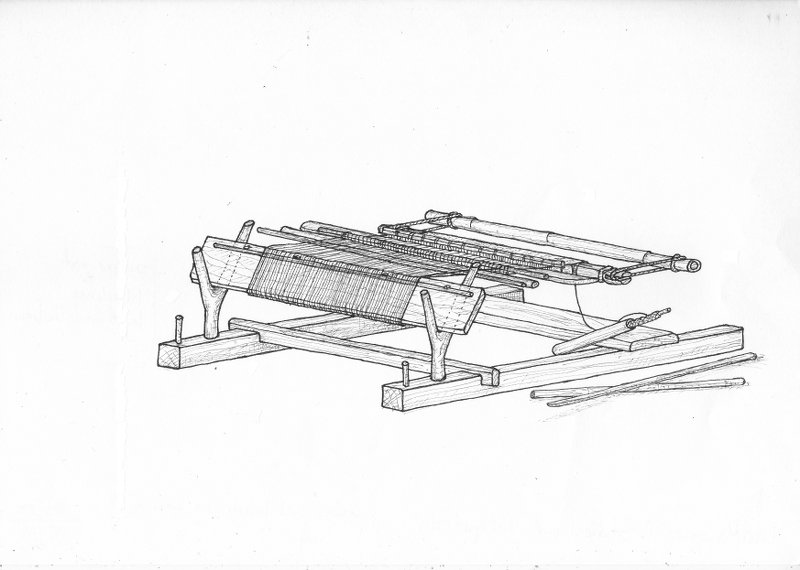
A fork as a warpboard holder, this time mounted on stand rails. Also here the same flat warp with reed comb wound on a very high warp board; in contrast to the rest of the Flores!
——————
Eine Astgabel als Kettbrett-Halterung, diesmal auf Standschienen montiert. Auch hier dieselbe Flachkette mit Rietkamm auf einem sehr hohen Kettbrett aufgewickelt; ganz im Gegensatz zum restlichen Flores!
by-nc-nd Charlotte Gröger/Guido Plum
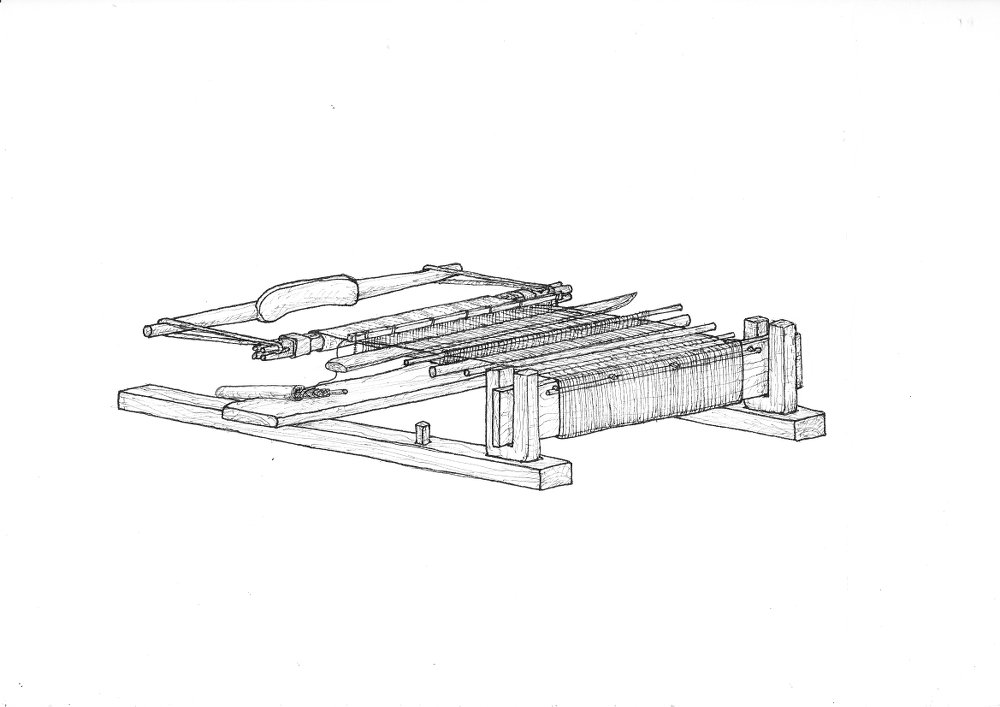
A station loom (on stand rails), as you also find in Manggarai. The design of the holder for the warping board has been simplified, otherwise everything has remained the same: a high warpboard with flat warp and reed comb in southern Central Manggarai.
———-
Eine Webstation auf Standschienen, wie man sie ebenso in Manggarai vorfindet. Die Gestaltung der Halterung für das Kettbrett hat sich vereinfacht, ansonsten ist alles beim Alten geblieben: hohes Kettbrett mit Flachkette und Rietkamm!
by-nc-nd Charlotte Gröger/Guido Plum
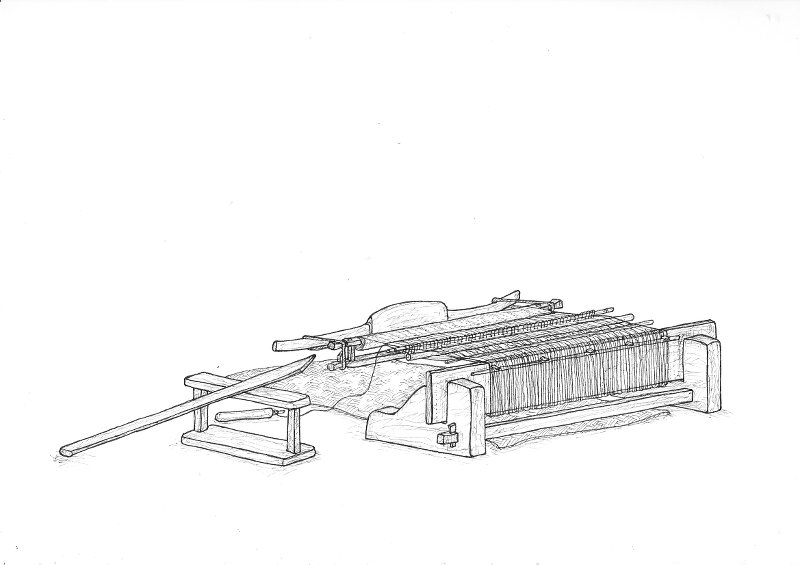
A loin loom of the Bima in Manggarai. Originally located along the coast, the loin looms of the Bima can now also be found in the interior of the Manggarai and in some further developments of weaving stations in the Manggarai. The Bima stand must be connected before weaving, which distinguishes it from actual, free-standing weaving stations on rails. These weaving stands have flowed into the Manggarai from the outside with the Bima and have been adapted by the Manggarai. The stands differ from the other looms, but also here a high warp board, flat warp and reed comb. In top of that, most Bima use a special, framed breast beam, which is also widespread in Manggarai.
——————-
Ein Lendenwebstuhl der Bima in Manggarai. Eigentlich ursprünglich entlang der Küste angesiedelt, finden sich die Lendenwebstühle der Bima heutzutage auch im Inland der Manggarai wieder und in manchen Weiterentwicklungen von Webstationen in der Manggarai. Der Bima-Ständer muß vor dem Weben angebunden werden, was ihn von tatsächlichen, freistehenden Webstationen auf Schienen unterscheidet. Diese Webständer sind mit den Bima von außen in die Manggarai eingeflossen und von ihnen adaptiert. Die Ständer unterscheiden sich von den anderen Webstühlen, doch auch hier ein hohes Kettbrett, flache Kette und Rietkamm. Obendrein benutzen die meisten Bima einen besonderen, gerahmten Brustbaum, der ebenfalls Verbreitung in der Manggarai fand.
by-nc-nd Charlotte Gröger/Guido Plum
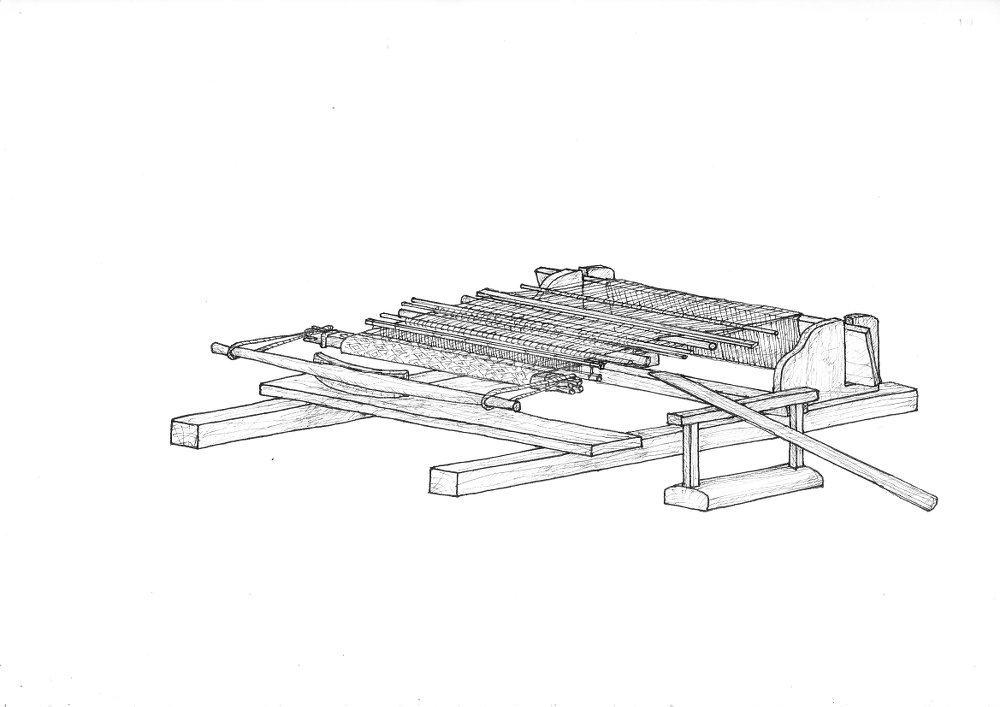
This weaving station in West-Manggarai seems to have been inspired by the weaving stands of the Bima in view of the side profiles that serve as a warp board holder. But here again flat warp with reed comb on a high warpboard.
———————-
Diese Webstation in West-Manggarai scheint sich angesichts der Seitenprofile, die als Kettbaum-Halterung dienen, an den Webständern der Bima inspiriert zu haben. Aber auch hier wieder Flachkette mit Rietkamm auf hohem Kettbrett.
by-nc-nd Charlotte Gröger/Guido Plum

An ordinary stake loom in Wae Rebo, no branch fork! The typical high warpboard is inserted in deep cuts; something that can hardly be observed in the rest of the Flores. There the warp beams(!) are tied or stored on stones.
——————
Ein gewöhnlicher Pfahlwebstuhl in Wae Rebo, keine Astgabel! Das typische hohe Kettbrett findet sich eingeschoben in Einschnitten; etwas was man im restlichen Flores kaum beobachten kann. Dort wird der Kettbaum angebunden oder auf Steine gelagert.
by-nc-nd Charlotte Gröger/Guido Plum
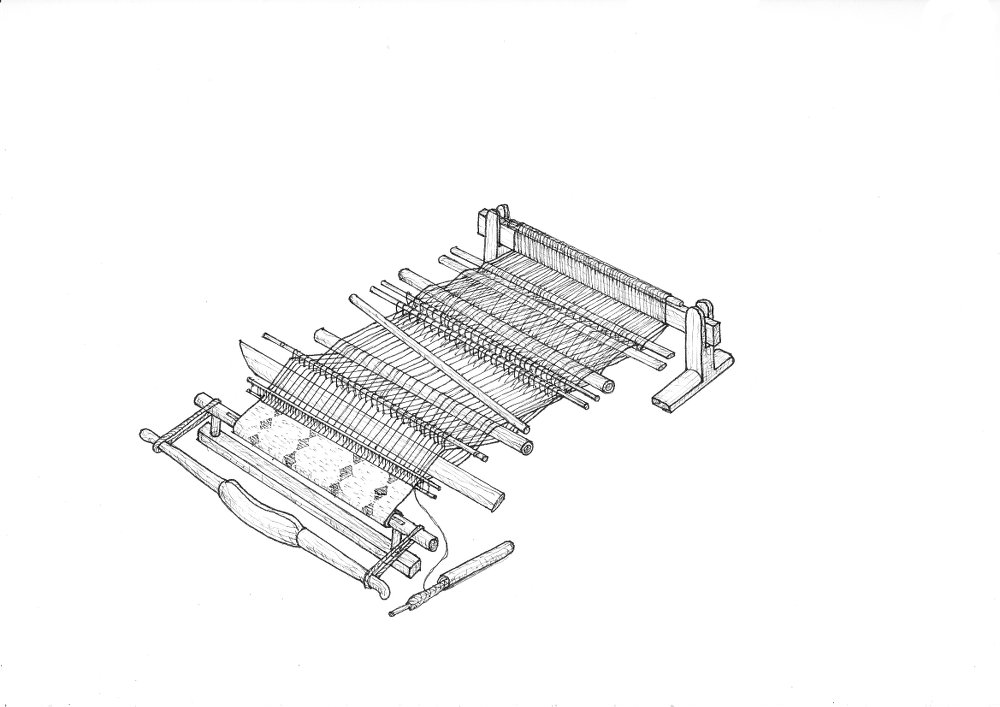
A construction of a loom made according to the information of Roy Hamilton in 1994. Accordingly, here in Manggarai the gift of the cotton maiden should provide looms with narrow warp slats, whose warp is rolled down. UNDER the slat.. until now this is not the case! Also, the stands have not been understood, only half-heartedly and thus incorrectly reproduced. Weaving is not that easy! - But that‘s how weaving is!
—————-
Eine Konstruktion eines Webstuhls nach den Angaben von Hamilton 1994 angefertigt. Demnach sollten sich hier in Manggarai Webstühle mit schmalen Kettlatten finden, deren Kette nach unten abgerollt wird…..bis jetzt ist das nicht der Fall! Auch ist die Kettbaum-Halterung ist nicht verstanden worden, nur halbherzig und somit falsch wiedergegeben. So einfach ist das Weben dann nun doch nicht! - SO ist das Weben!
by-nc-nd Charlotte Gröger/Guido Plum

Another loin loom is found in the traditional village of Wae Rebo in the southern central Manggarai. Its posts are reminiscent of similar designs of the Mandar on West-Sulawesi. However, they were integrated together with their stands in a transverse binder. The rails only serve the seat board and to keep the loom stand at a constant distance; the rails are not connected to the crossbar here! - another influence from Sulawesi?
—————-
Ein weiterer Lendenwebstuhl findet sich in dem traditionellen Dorf Wae Rebo in der südlichen Zentral-Manggarai. Seine Standpfosten erinnern an ähnliche Gestaltungen der Mandar auf West-Sulawesi. Sie wurden allerdings samt der Standfüße in einem Querbinder integriert. Die Schienen dienen lediglich dem Sitzbrett und um den Webständer auf konstanten Abstand zu halten; die Schienen sind hier nicht mit dem Querbinder verbunden! - ein weiterer Einfluss aus Sulawesi?
by-nc-nd Charlotte Gröger/Guido Plum
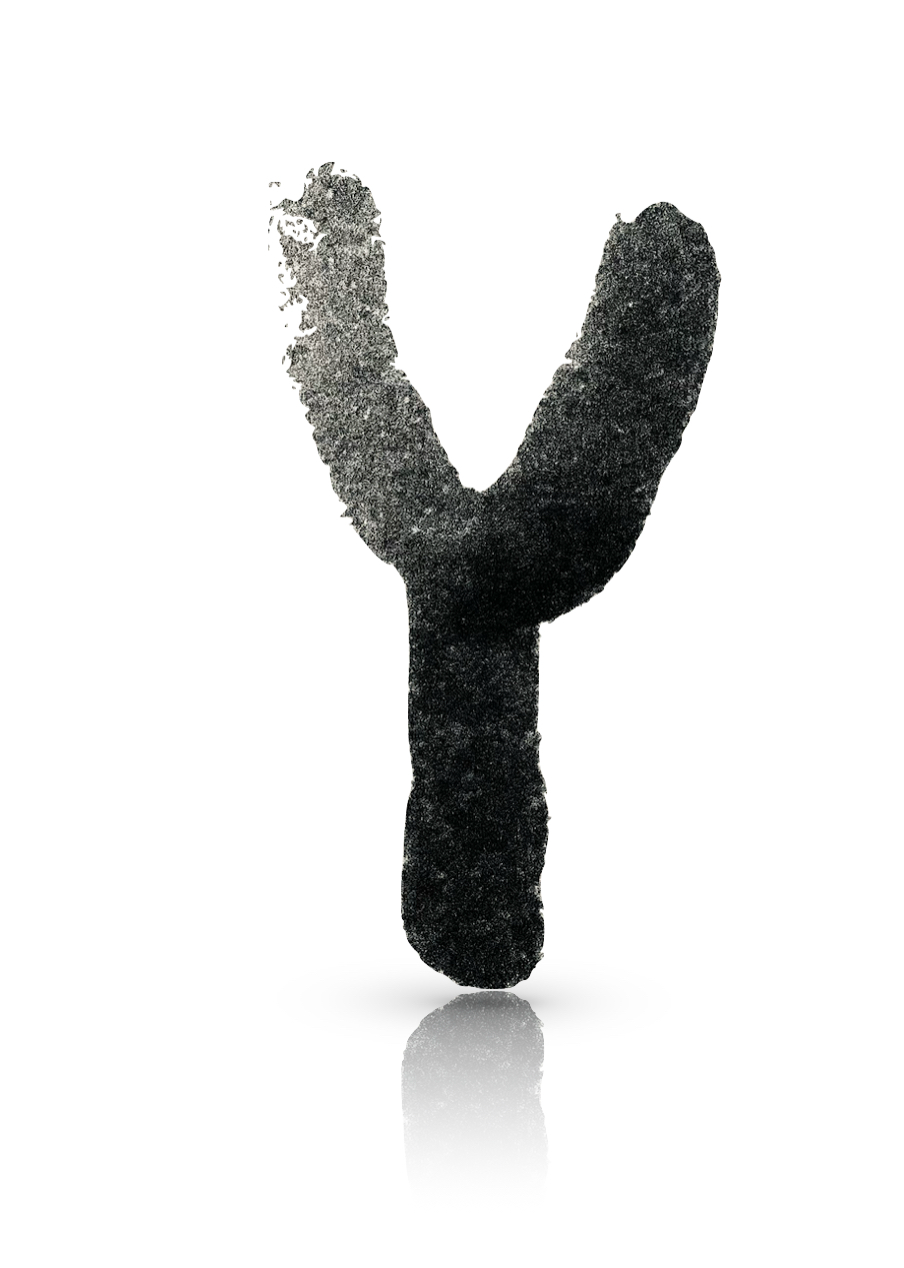
The Y, the fork as a design element, is found in many functions, not only in the Manggarai, but also in the neighboring Ngada. Similar designs can also be found on the cone-shaped buildings of the Manggarai. Christian missionaries already enjoyed at the beginning of the 20th century on them, they should represent the tree of life to which the animistic culture was thought to have been converted! The fork can be found in oversized sculptures on the Ngada village squares, in the treework, also in the building, as a ritual sky staircase in ghost houses and as an original warp board holder in the loin loom of the Manggarai! ..... Any questions left?
—————
Das Y, die Astgabel als gestaltendes Element findet sich in vielfacher Funktion, nicht nur in der Manggarai, doch auch im benachbarten Ngada, wieder. Ähnliche Gestaltungen finden sich auch auf den kegelförmigen Bauten der Manggarai. Schon christliche Missionare erfreuten sich Anfang des 20. Jahrhunderts an ihnen, sollen sie doch den Baums des Lebens darstellen, zu dem zu bekehren war! Die Astgabel findet sich in übergroßen Skulpturen auf den Dorfplätzen, im Baumwerk, auch im Bauwerk, als rituelle Himmelstreppe in Geisterhäuser und eben als ursprüngliche Kettbaum-Halterung im Lendenwebstuhl der Manggarai!…..Noch Fragen?
Alle Rechte vorbehalten Charlotte Gröger/Guido Plum